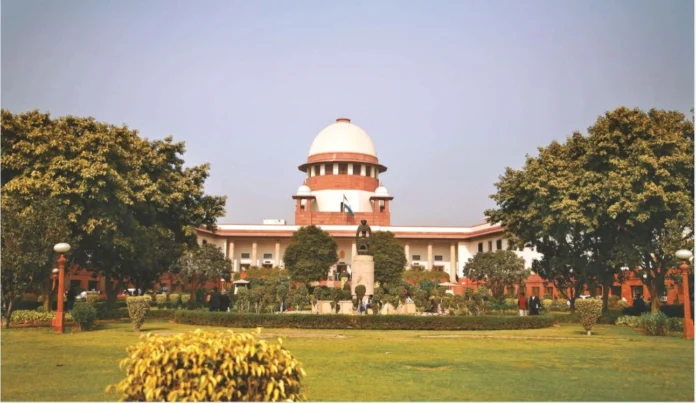By Binny Yadav
In a landmark ruling that may transform the relationship between corporate harm and criminal justice, the Supreme Court has held that companies qualify as “victims” under the Code of Criminal Procedure (CrPC) and therefore have the right to independently file criminal appeals.
The decision, delivered in a case involving Asian Paints Ltd., redefines victim jurisprudence in India and signals a powerful shift in the legal strategy available to businesses affected by fraud, counterfeiting, and intellectual property (IP) crimes.
For decades, Indian criminal procedure has centred the State as the sole prosecutorial agent, leaving victims—and especially legal entities like corporations—largely sidelined in criminal appeals. The apex court has now dismantled that orthodoxy, aligning legal interpretation with the realities of a 21st-century, commerce-driven economy.
FROM PASSIVE OBSERVERS TO ACTIVE LITIGANTS
The case arose from a Rajasthan High Court ruling that dismissed Asian Paints Ltd’s appeal under Section 372 of the CrPC. The company had sought to challenge the acquittal of a retailer found selling counterfeit paint—an act that harmed its brand, diluted consumer trust, and caused quantifiable financial loss.
The High Court rejected the appeal on technical grounds, noting that the original complaint had been filed by an IP consultant rather than the company itself. This, it held, denied the company’s standing.
The Supreme Court overturned that view, ruling that the definition of “victim” under Section 2(wa) of the CrPC is both expansive and purposively inclusive. Read with Section 11 of the Indian Penal Code (IPC), which defines “person” to include corporations, the Court held that corporate entities can indeed claim victimhood—and therefore have the right to file criminal appeals when harmed.
REDEFINING VICTIMHOOD IN THE CORPORATE CONTEXT
At the heart of this judgment lies an evolved understanding of harm. In today’s hyper-digital, globalised marketplace, corporations face threats not through violence, but via piracy, cybercrime, data theft, counterfeiting, and deceptive trade practices.
Until now, such offences were often brushed aside as civil disputes. The ruling decisively reclassifies them as serious criminal matters, empowering companies to seek redress through the criminal courts—not just regulatory or civil routes.
The apex court acknowledged that reputational injury, market dilution, and economic damage can be just as real—and devastating—as bodily harm.
CLARIFYING CRPC SECTION 372
The Supreme Court also addressed a long-standing grey area. In 2009, a pivotal amendment to the CrPC had inserted a proviso to Section 372, allowing victims to file appeals against:
- Acquittals.
- Convictions for lesser offences.
- Inadequate compensation.
This right was meant to exist independently of the State’s decision to appeal under Section 378. However, many High Courts had adopted narrow interpretations, creating legal uncertainty.
The Supreme Court’s judgment now settles the matter: victims—including corporations—need not rely on the State to challenge an acquittal.
STRENGTHENING CORPORATE CRIME ENFORCEMENT
For companies struggling to combat organised IP crime, this ruling is both practical and symbolic. It:
- Empowers brand owners to take criminal action against counterfeiters.
- Bolsters deterrence against economic offences.
- Reaffirms the relevance of criminal law in the commercial domain.
Sectors like pharmaceuticals, software, fast-moving consumer goods, and luxury goods—frequent targets of IP violations—will especially benefit.
A NEW POLITICAL ECONOMY OF JUSTICE
Beyond legal doctrine, the judgment resonates with India’s larger business and governance priorities. As investor confidence and ease-of-doing-business rankings become increasingly critical, the ruling fortifies the institutional backbone for corporate accountability and rights.
It also nudges the criminal justice system towards a shared enforcement model, where victims play an active role rather than waiting for an often overburdened or disinterested State prosecutor to act.
BUILDING ON EVOLVING VICTIM JURISPRUDENCE
This decision is not an outlier—it builds on a growing judicial consensus about victim participation in the criminal justice process.
- In Jagjeet Singh vs Ashish Mishra (2022), the Court upheld the right of victims to be heard during bail proceedings.
- In Mahabir vs State of Haryana (2025), it emphasized purposive interpretation of Section 372 to allow autonomous appeals by victims.
Advocate Ajay Singh of Singh Law Chambers LLP, who represented Asian Paints, called the ruling a “foundational shift” in criminal law: “It bridges the procedural gap that had long excluded non-individual victims from meaningful participation.”
WHY IT MATTERS
The implications are far-reaching:
- Criminal law is now a viable recourse for commercial entities.
- Intellectual property violations gain legal seriousness and procedural bite.
- Victims—natural or legal—can now assert their rights from trial through appeal.
While implementation in lower courts will be the next challenge, the message is clear: “Corporate entities are not passive bystanders in the face of criminal harm—they are victims with enforceable rights.”
In a justice system long dominated by State discretion, this ruling is a powerful call to democratise access and redefine who gets to speak in court.
—The writer is a New Delhi-based journalist, lawyer and trained mediator


